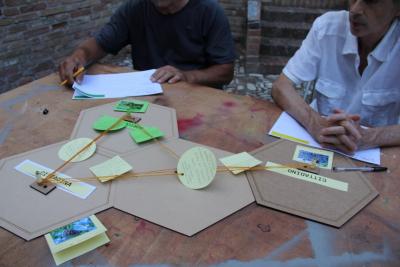Description
In the last years, the decline in the abundance and diversity of European wild insect pollinators has drawn much scientific and public attention. The trend constitutes a dramatic issue for both biodiversity protection and food security due to the crucial role of pollination in the propagation of many plant species. To provide a framework for a coherent tackling of pollinators decline across the European Union, in 2018 the European Commission adopted the EU Pollinators Initiative, which has been revised in 2023 (COM(2023) 35) as A New Deal for Pollinators. This Communication set up an EU-wide framework for short- to long-term actions to reverse the decline and ultimately support the recovery of insects. The third priority of the Initiative focuses on ‘Mobilising the society and promoting strategic planning and cooperation at all levels’.
The Science and Technology for Pollinating Insects (STING) project is developed under the framework of the European Initiative on Pollinators, with one of its work packages focusing on exploring innovative forms of engaging different groups of citizens in addressing this issue using the principles of co-creation. In this context the Competence Centre on Participatory and Deliberative Democracy has coordinated a project that aimed to explore how citizens and farmers can start working together to build trust, improve mutual understanding, expand the public debate to include in it their concerns and matters of care, and ultimately develop together place-focused interventions grounded in local culture, needs and capacities. The project paid particular attention to the kind of sensitivities raised by the issue of pollinators’ decline (e.g., the fragile and often embattled position of the farmers, contentious aspects like the use of pesticides) as well as to the context in which the discussion was to take place (local culture, practices, social relations, local media exposure). As for any citizen engagement process, the ultimate purpose was to better understand what really matters in the definition of the issue and so consequently to be able to develop solutions that would be locally meaningful.
The project included a series of citizen engagement processes conducted by external experts in five EU countries. In collaboration with the Competence Centre, the experts designed these processes and created a tailor-made choreography of the events following a thorough study of the local situation, taking into consideration the narratives and frames circulating in the public debates, policy context, existing activities and levels of engagement as well as local culture and practices. Each citizen engagement process was implemented in two locations with different agricultural, environmental and social characteristics in order to better understand how contextual factors play out in the design and implementation of citizen engagement processes around pollinators’ decline.
When and Where
Policy Context
- The EU Pollinators Initiative, especially the 3rd priority on the engagement of the society-at-large: https://environment.ec.europa.eu/topics/nature-and-biodiversity/pollinators_en
- Nature Restoration Law includes a legally binding target on reversing the decline of pollinators: https://environment.ec.europa.eu/topics/nature-and-biodiversity/nature-restoration-law_en
Participants
Methodologies
Impact
Assessment
- Protection of pollinators remains largely unfamiliar to a large number of citizens, although the levels of awareness and interest vary enormously across the EU. At the same time the topic is very sensitive for farmers, as it connects to some of the biggest tension points around agriculture (pesticides, monoculture farming, industrialization). Farmers, though this again depends on the type of farming practiced, are often reluctant to engage with the broader public. As such, to run similar processes a lot of preparatory work needs to be done to build basic trust. Despite that, once engaged in the process, citizens quickly proved interested in the issue - though the concerns did not necessarily revolve around food security, which remains the key narrative around the issue, sometimes moving in the direction of intrinsic concern with nature.
- Collaboration with institutions, whether local administrations or research institutes, can be both a great boost and a liability, depending on the previous experiences of the participants with the institution and its general reputation. In some instances collaborations a lot of legitimacy from such association, in other there was a 'participation fatigue' arising from previous experiences of engagement without results.
- Processes should ideally be grounded in formats that are familiar to the potential participants. This means that even if they are not familiar and intrinsically interested in the topic, the format itself might be a sufficient ground for interest. This in turn allows for recruitment of a broader range of citizens, not necessarily the 'usual suspects' or those with pre-existing interest in the issue. An excellent example was the design of the Romanian process around the format of a Transylvanian Picnic, which are very popular way of spending free time among locals (https://www.romanianfriend.com/tours/food-trips-to-culinary-events-discover-the-rural-food-culture-of-southern-transylvania).
